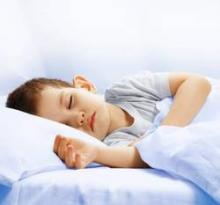Children older than 2 years may not benefit from daytime napping, according to results froma new meta-analysis of sleep studiesin children 5 years and younger.
After 2 years, napping was consistently associated with later onset of sleep during the night and lesser quality and duration of sleep, according to the findings published online Feb. 17 in Archives of Disease in Childhood (doi:10.1136/archdischild-2014-307241).
This was the finding in 26 nonrandomized studies of napping in children 5 years and younger measuring various outcomes including endpoints related to night sleep, behavior, and cognition, despite the low quality of studies evaluated and their heterogeneous endpoints, reported Karen Thorpe, Ph.D., of Queensland University of Technology in Australia, and her associates.
Correlation of daytime napping with nighttime sleep patterns ranged from small to moderate effect sizes in the studies. Whether the observed trends translate into other developmental and health outcomes is uncertain, the researchers said, and better-designed studies are needed establish this. Current findings related to child sleep and developmental and behavioral outcomes tend to measure either night sleep only or total sleep in a 24-hour period, and findings from such studies “have been extrapolated to infer the value of promoting napping, in both home and child-care contexts.” However, there may be differences in day and in night sleep, they said, citing studies on napping and night sleep that have revealed “differences in sleep architecture,circadian timing,and developmental salience.”
Dr. Thorpe and her colleagues wrote that one possible explanation for their findings is that “napping acts to dissipate homeostatic sleep pressure,”with this mechanism evidenced by increased sleep latency and later sleep onset.
“Together, the evidence suggests that, beyond the age of 2 years, napping can influence night sleep patterning.” For clinicians treating sleep problems among preschool-age children, “the investigation of napping patterns is indicated.”
Dr. Thorpe and her colleagues disclosed no relevant conflicts of interest.


